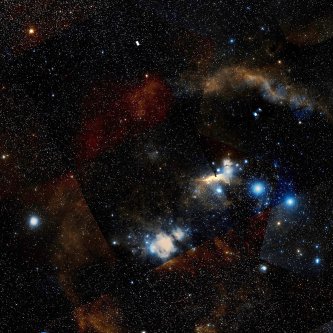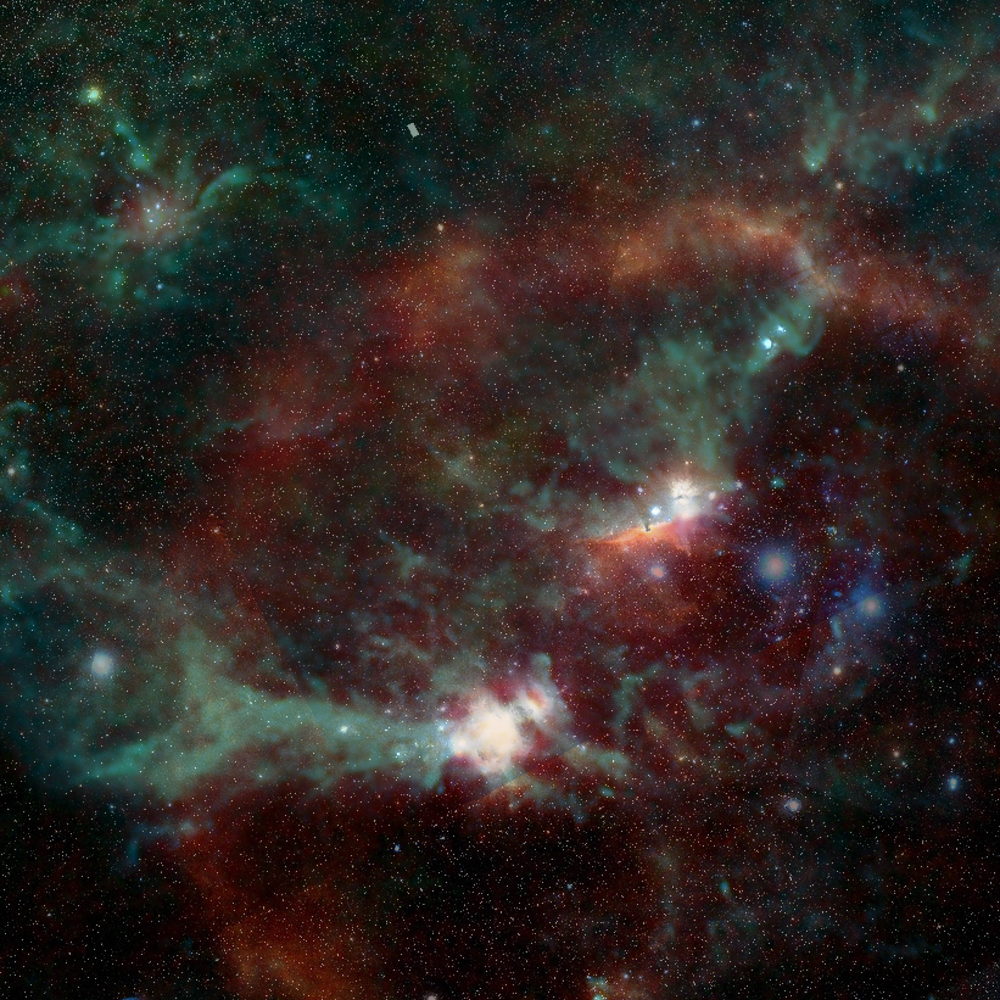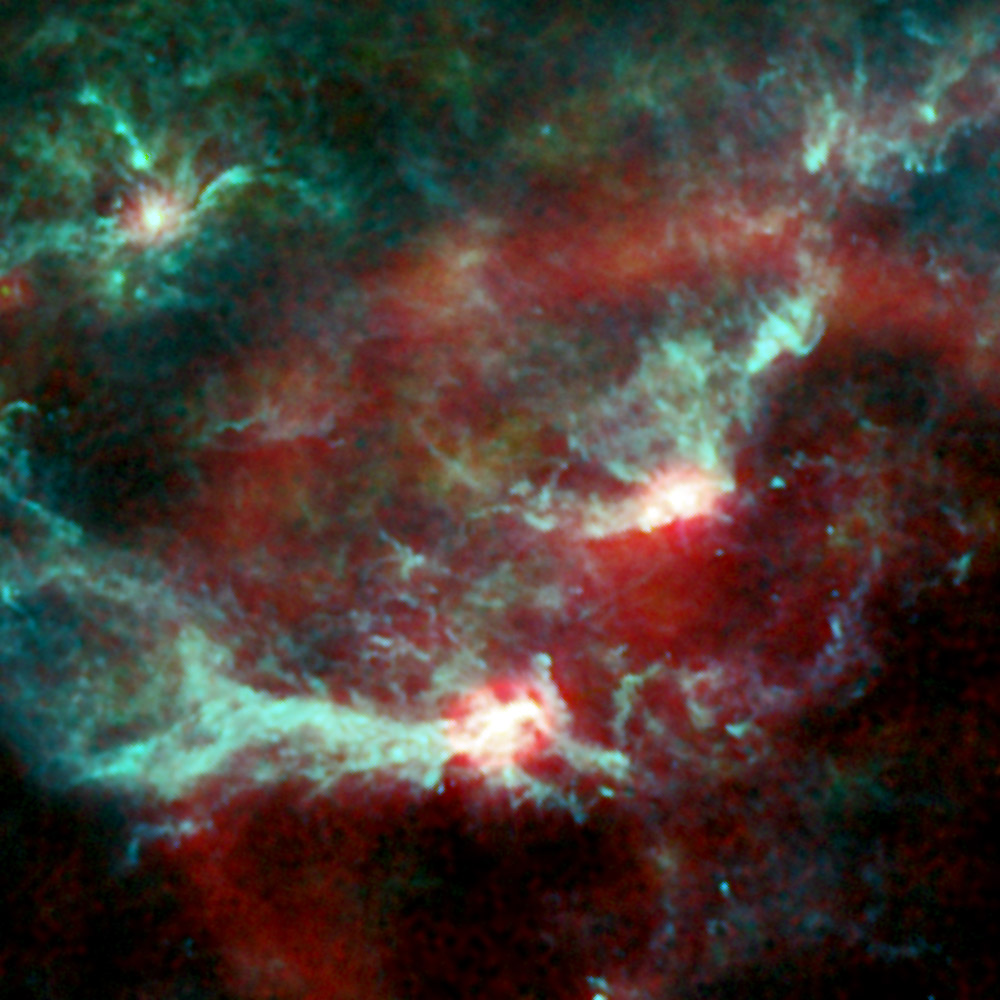| Basic Information | |
| What is this? | The constellation of Orion as seen by Planck |
| Where is it in the sky? | In the constellation of Orion the Hunter |
| How big is it? | The image is about 10 degrees across |
| How far away is it? | Much of the material is thousands of light years away |
| What do the colours represent? | Red colours show electrons and gas, while the green and blue colours show dust |
Downloads
The Orion Nebula as seen by Planck at microwave wavelengths. The red colour shows longer wavelength light which is emitted by electrons spiralling round magnetic fields in the Galaxy, while the green and blue material is emitted by dust laced between the stars. The gas and dust are what stars are made of, and measuring their distribution is crucial to working out how stars form, and what effect the properties of the gas and dust can have on the resulting stars. The loop of red material is Barnard’s Loop, which is a ring of material around 300 light years across and about 1600 lightyears away. The ring was formed by a supernova which exploded millions of years ago.

Visible only 
Visible + Planck
The same patch of sky is shown above at visible wavelengths, and with the Planck image overlaid. The three stars on the right of the visible light image are the “belt” of Orion, while the bright feature just below the centre is the Orion Nebula, associated with the stars in the “sword” of Orion.
Because Planck is mapping the entire sky, it can observe the gas and dust over the whole sky. Other experiments, such as Herschel, can examine the dust at much higher resolution, but only over small regions.
You can also see a similar image of a region of sky in the constellation of Perseus here.
You can also see this part of the sky at different wavelengths on Chromoscope.
